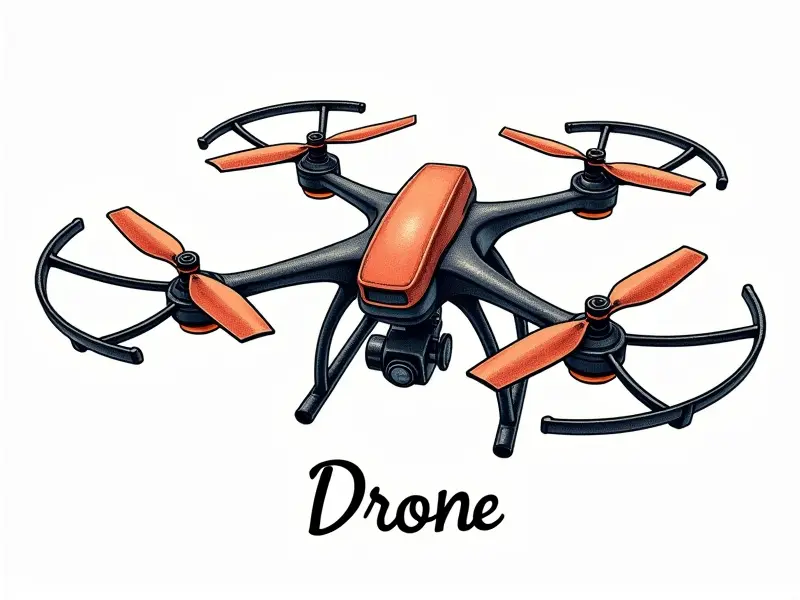How do I level my RC quadcopter?

How to Calibrate Your RC Quadcopter
Calibrating your RC quadcopter is a crucial step in ensuring that it performs optimally. Proper calibration helps the drone maintain stability and balance during flight, which is essential for both beginners and experienced pilots.
- Step 1: Turn on your quadcopter and connect to its control system via Bluetooth or another wireless protocol.
- Step 2: Access the calibration menu in your remote controller or flight software. This is usually found under settings or a similar option.
- Step 3: Follow the on-screen instructions to calibrate the throttle, roll, pitch, and yaw controls. Ensure that each axis responds correctly before moving on to the next one.
Easy Steps to Leveling RC Quadcopters
Leveling your quadcopter involves ensuring that all motors are balanced and aligned properly so that it can fly straight without tilting or drifting. Here’s how you can do it:
- Step 1: Place the drone on a flat surface.
- Step 2: Check if the propellers are evenly spaced and aligned with their respective motors.
- Step 3: Use a digital level or smartphone app to measure the tilt of each motor. Adjust the mounting screws until all motors are perfectly horizontal.
Quick Guide: Balancing RC Quadcopters
Balancing your quadcopter is essential for achieving smooth and stable flight performance. Here’s a quick guide:
- Step 1: Inspect the frame and ensure it's free from warping or damage.
- Step 2: Weigh each arm of the quadcopter to check for any imbalance. If one side is heavier, adjust by adding or removing weight as needed.
- Step 3: Test fly your drone in a safe area and observe its behavior. Make fine adjustments based on how it performs.
Tips for Perfectly Leveling RC Quads
To achieve perfect leveling, follow these tips:
- Tip 1: Use high-quality propellers that are perfectly balanced. Uneven or damaged props can cause imbalance.
- Tip 2: Ensure all motors have the same power output by testing them individually before assembly.
- Tip 3: Regularly check and tighten screws to prevent any loosening that could affect balance over time.
Fast Fixes for RC Quadcopter Imbalance
If your quadcopter is imbalanced, try these quick fixes:
- Fix 1: Adjust the motor mounting screws to ensure all motors are level and aligned.
- Fix 2: Replace any damaged or worn-out propellers with new ones that match in weight and balance.
- Fix 3: Check for loose connections between the ESCs (Electronic Speed Controllers) and motors, and tighten them if necessary.
Beginner's Guide to RC Levelling
If you're new to quadcopters, leveling can seem daunting. Here’s a beginner-friendly guide:
- Step 1: Start by understanding the basic components of your drone and how they interact.
- Step 2: Follow manufacturer instructions for initial setup and calibration.
- Step 3: Practice adjusting screws and propellers in small increments to see immediate effects on flight behavior.
Achieving Perfect Balance on Your Quadcopter
To achieve perfect balance, focus on these key areas:
- Balancing the Frame: Ensure that your quadcopter’s frame is perfectly level and free from warping.
- Motor Alignment: Check that each motor is aligned correctly with its propeller, and adjust as needed.
- Weight Distribution: Distribute weight evenly across all arms to prevent any side from being heavier than the others.
How to Calibrate Gyro on RC Quadcopter
The gyro sensor is critical for maintaining stability. Here’s how to calibrate it:
- Step 1: Power up your quadcopter and access the calibration menu.
- Step 2: Follow instructions to perform a static calibration, where you hold the drone steady while the gyro measures its position.
- Step 3: Perform dynamic calibration by moving the drone in various directions to ensure it can accurately track movement.
Quick Guide: Balancing Your RC Quadcopter
A quick guide for balancing your quadcopter includes these steps:
- Step 1: Place the drone on a flat surface and use a digital level to check motor alignment.
- Step 2: Adjust mounting screws as needed to ensure all motors are perfectly horizontal.
- Step 3: Test fly your drone in a safe area and make fine adjustments based on its behavior during flight.
Step-by-Step Guide to RC Drone Leveling
Follow this step-by-step guide for leveling your RC quadcopter:
- Step 1: Inspect the frame and propellers for any damage or misalignment.
- Step 2: Use a digital level to measure motor tilt and adjust mounting screws accordingly.
- Step 3: Test fly your drone in a controlled environment and make adjustments based on its performance.
Quick Tips for Levelling Your FPV Racing Drone
For FPV racing drones, precision is key. Here are some quick tips:
- Tips 1: Use high-precision tools like digital levels and torque wrenches to ensure accuracy.
- Tips 2: Regularly check and calibrate the gyro sensor for optimal stability during fast maneuvers.
- Tips 3: Fine-tune your flight controller settings to match your flying style and drone specifications.
Conclusion
Leveling your RC quadcopter is a fundamental skill that every pilot should master. By following the steps outlined in this guide, you can ensure optimal performance and stability during flights. Regular maintenance and calibration will help keep your drone balanced and ready for any adventure.

